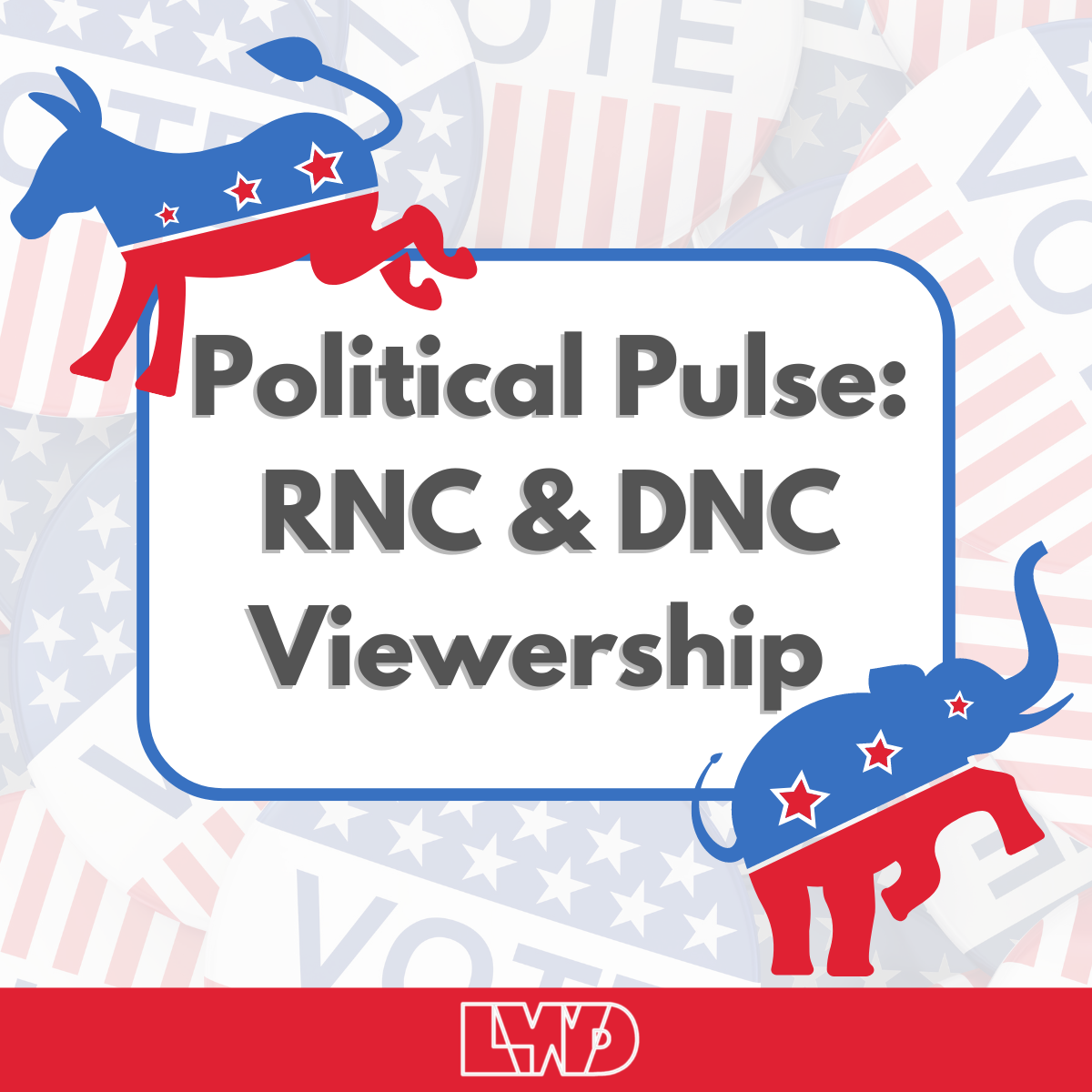
Decoding Convention Viewership: What RNC and DNC Metrics Can Tell Us About Media Strategy
As the 2024 election approaches, the Republican National Convention (RNC) and Democratic National Convention (DNC) viewership have provided critical insights into public interest and media consumption patterns. Both conventions serve as a barometer for voter engagement and signal potential shifts in how campaigns will be covered leading up to the election. A closer look at the viewership metrics reveals trends that could shape media strategies in the months ahead.
RNC vs. DNC: A Ratings Snapshot
The RNC and DNC, traditionally televised and streamed across multiple platforms, garnered significant viewership, though the figures varied notably between the two. According to Nielsen, the DNC averaged 21.8 million viewers over the 4 days of coverage, surpassing this year’s RNC by 14%. Despite the differences in viewership totals, what’s for certain is that the general public, especially adults 55+, are highly engaged with political media coverage as it gets closer to this year’s election.
Key Takeaways for Building Media Strategies
- Diverse Media Strategies Are Crucial: In today’s fragmented media landscape, brands need to have a total video strategy that incorporates both linear and streaming platforms. Nielsen’s reported figures for both conventions may show high viewership, but they don’t capture the full picture. A significant number of viewers also tuned in through digital platforms such as YouTube, Twitch, and public access channels like C-SPAN—platforms not included in Nielsen’s totals. To effectively reach your audience across all channels, a multi-channel approach accounts for diverse viewing habits, maximizing campaign reach and impact.
- Engagement Matters as Much as Viewership: While total viewership provides a broad measure of a campaign’s reach, it’s equally important to track engagement metrics, like time spent watching or direct response rates. These metrics offer deeper insights into how effectively a campaign resonates with the audience and drives desired actions. By measuring all brand KPIs, advertisers can gain a more comprehensive understanding of a campaign’s impact, ensuring that every aspect of audience interaction is accounted for and optimized.
- Targeting Specific Demographics: The differing viewership patterns of the conventions underscore the importance of tailoring media strategies to specific demographics. Each target audience has unique media consumption behaviors, which must be carefully considered when creating a media plan. As the election approaches, campaigns will increasingly refine their outreach by focusing on the platforms and media channels most effective in reaching their key segments. This precise targeting ensures that messaging resonates with the right audience, maximizing engagement and campaign effectiveness.
What Does This Mean for Advertisers?
The intense political coverage and heightened viewership leading up to the election present significant opportunities for advertisers. With audiences deeply engaged across various platforms, campaigns can capitalize on this momentum by strategically placing their messages where they will have the most impact (among the right audience). Keeping a total video media strategy and understanding target demographic behavior will allow brands to connect with viewers who are actively seeking information, making it an ideal time to reinforce key messages and drive action.
For more information about Nielsen’s findings from each convention, review their articles below:
Better planning & measurement start here. Let’s get to work!